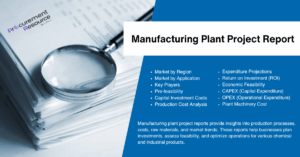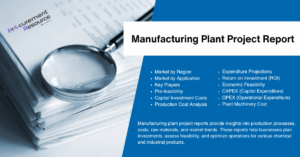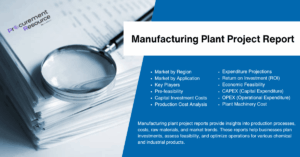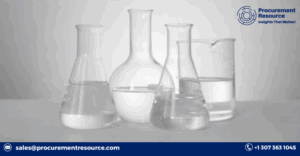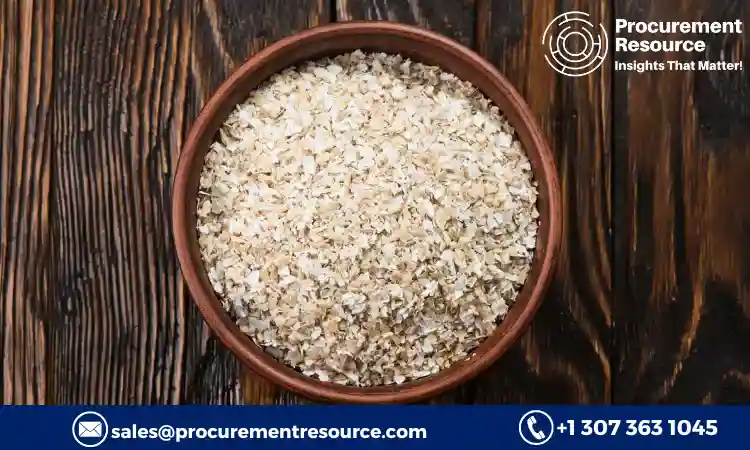
The latest report titled “Cellulose Production” by Procurement Resource, a global procurement research and consulting firm, provides an in-depth cost analysis of the production process of Cellulose.
Procurement Resource study is based on the latest prices and other economic data available. It also offers additional analysis of the report with detailed breakdown of all cost components (capital investment details, production cost details, economics for another plant location, dynamic cost model). In addition, the report incorporates the production process with detailed process and material flow, capital investment, operating costs along with financial expenses and depreciation charges.
Request For Free Sample: https://procurementresource.com/production-cost-report-store/cellulose/request-sample
Procurement Resource’s detailed report describes the stepwise consumption of material and utilities along with a detailed process flow diagram. Furthermore, the study assesses the latest developments within the industry that might influence Cellulose production cost, looking into capacity expansions, plant turnarounds, mergers, acquisitions, and investments.
Procurement Resource Assessment of Cellulose Production Process:
1.Cellulose Production Cost From Softwood: This report presents the detailed production methodology and cost analysis of Cellulose industrial production across Cellulose manufacturing plants. In the initial step, the wooden logs are chipped, and these chips then undergo a pulping process. The obtained pulp furtherundergoes bleaching and purification for the removal of impurities like lignin, etc. In the final step, the dissolution of pulp is achieved via sodium hydroxide and carbon disulfide that break the cellulose fibers into liquid cellulose.
Request For Free Sample: https://procurementresource.com/cost-analysis/cellulose-or-dissolving-pulp-production-from-softwood/requestsample
Product Definition:
A complex carbohydrate, cellulose, serves as the primary structural element of plant cell walls. It is made up of beta-1,4-glycosidic linkages that connect linear chains of glucose molecules. Cellulose has a high tensile strength and is insoluble in water, forming fibrous structures. The general structural integrity of plants is aided by its ability to give plant cells strength and stiffness. It creates a dense web of fibres that gives plant tissues support and stability. It can be broken down by specific microbes and enzymes and is biodegradable. Although it is insoluble in water, it has an affinity for water due to its hydrophilic characteristics. Because of its capacity to absorb and hold moisture, cellulose can be used in the production of paper and textiles, among other things.
Market Drivers:
Since cellulose is the primary ingredient of paper and cardboard, it is an essential component of the paper industry. It is perfect for producing different sorts of paper goods due to its strong tensile strength and capacity to absorb and retain water. In the textile business, cellulose fibres made from plants like cotton and flax are widely used. Also, through biochemical or thermochemical processes, cellulosic biomass, such as agricultural waste and special energy crops, can be transformed into biofuels like ethanol. In the food sector, cellulose derivatives like carboxymethylcellulose and methylcellulose are employed as additives. In a variety of food products, they serve as thickeners, stabilizers, and emulsifiers. The building sector uses cellulose-based products such as cellulose insulation and cellulose nanocrystals. They increase building materials’ strength, increase fire resistance, and provide thermal insulation.
Looking for an exhaustive and personalised report that could significantly substantiate your business?
Although Procurement Resource leaves no page unfurled in terms of the rigorous research for the commodities that make the heftiest base of your business, we incline more towards tailoring the reports per your specificities. All you need is one-to-one consulting with our seasoned consultants to comprehend the prime parameters you are looking to pin your research on.
Some of the common requests we receive from our clients include:
- Adapting the report to the country/region where you intend to establish your plant.
- Adjusting the manufacturing capacity of the plant according to your needs
- Customizing machinery suppliers and costs to meet your requirements.
- Providing additional information to the existing scope based on your needs.
About Us:
Procurement Resource ensures that our clients remain at the vanguard of their industries by providing actionable procurement intelligence with the help of our expert analysts, researchers, and domain experts. Our team of highly seasoned analysts undertakes extensive research to provide our customers with the latest and up-to-date market reports, cost models, price analysis, benchmarking, and category insights, which aid in simplifying the procurement process for our clientele.
Procurement Resource work with a diverse range of procurement teams across industries to get real-time data and insights that can be effectively implemented by our customers. As a team of experts, we also track the prices and production costs of an extensive range of goods and commodities, thus, providing you with updated and reliable data.
We, at Procurement Resource, with the help of the latest and cutting-edge techniques in the industry, help our clients understand the supply chain, procurement, and industry climate so that they can form strategies that ensure their optimum growth.
Contact Us:
Company Name: Procurement Resource
Contact Person: Jorge Garcia
Email: sales@procurementresource.com
Toll-Free Number: USA & Canada – Phone no: +1 307 363 1045 | UK – Phone no: +44 7537 132103 | Asia-Pacific (APAC) – Phone no: +91 1203185500
Address: 30 North Gould Street, Sheridan, WY 82801, USA


